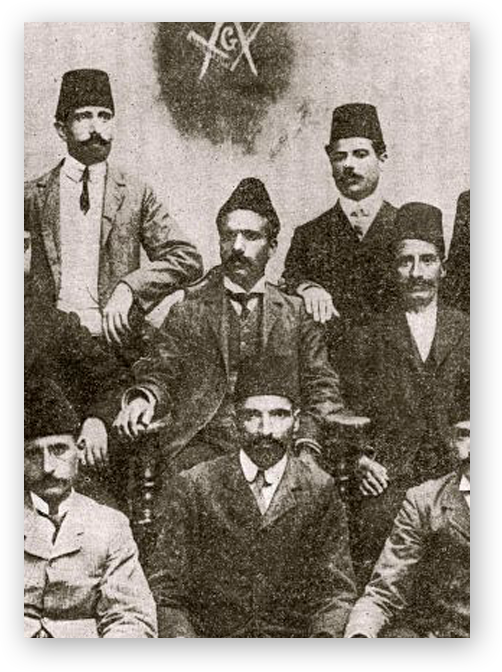


History of the Armenian Freemasons begins under the auspices of the United Grand Lodge of England. The English “East India Company” introduced freemasonry of English origin in Madras (now Chennai) in 1730. Many Armenian merchants who were already established tradesmen in India and Southeast Asia also played an important role in the East India Company. They followed the English rules of conduct and often traveled throughout Europe and, at the same time, had ascended in the Indian social strata As the first instance of an active member of Armenian origin in one of the Informative Bulletins of the Cannon-gate Lodge in Edinburgh.
1762 it is stated that “… four Worshipful Masters would represent the United Grand Lodge of England in the territories of the Middle East, Aleppo and Iran…” Among those four persons, it was the name of the Armenian Dr. Manassewho was appointed as Provincial Grand Master for “Armenia” by order of the Grand Master of the Premier Grand Lodge of England, Earl Ferrers, from 1762 to 1764. Until 1805, when the name of Manasse officially disappeared, the group of four lodges headed by these Worshipful Masters was called “All Armenia in the East Indies” — remarkable for this period, the foundation of the First Lodge composed of members of Armenian origin.

On October 6th 1837, in the city of Madras, Colonial India, the Lodge “Armenian” No. 685 was consecrated under the auspices of the United Grand Lodge of England. This lodge had a brief life (1865) as a result of ups and downs in its activities. It was linked to prestigious families of established Armenian merchants in that city. The Lodge “Armenia” No. 685 worked in the Armenia Street in that city.
The last Masonic link of Armenian origin, and of relevant importance in Victorian India, was Sir Paul Chater (Khachik Pogos Astvatsatoor). Born in Calcutta in 1846, he was a prestigious and successful man who developed all his potential in imperial Hong Kong. He has been Worshipful Master of the lodge “Perseverance” No. 1165, Grand Master of the Hong Kong District and the South of China for the United Grand Lodge of England (1881-1909), one of the first Armenian masons in having the Masonic High Degree 33° and, even today, the District of the United Grand Lodge of England for Hong Kong and the Far East auspices a lodge called “Paul Chater Lodge of Installed Masters” No. 5391. Undoubtedly, he was one of the masons of Armenian origin who had reached one of the highest points on the scale of Regular Freemasonry.
Hundreds of Armenians were initiated in both Lodges, which worked continuously until the first years of the last decade of the nineteenth century, when Sultan Abdul Hammid II started the terrible repression of the Armenian Nation throughout the Empire. The members of these lodges had been the lights in the cultural revival of the Armenian nation with a net influence up to these days. Other Lodges of less relevance at the time were “Armenak” (1872, Izmir, Grande Oriente d’Italia) and “Ararat” No. 76 (1882, Cairo, National Grand Lodge of Egypt).